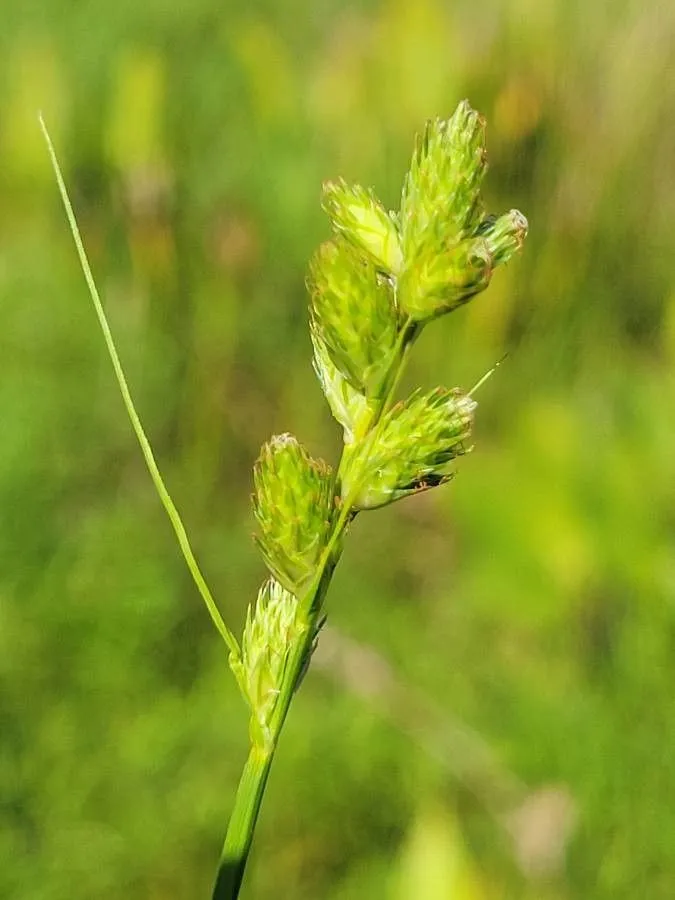
Author: Mack.
Bibliography: Bull. Torrey Bot. Club 49: 373 (1922)
Year: 1922
Status: accepted
Rank: species
Genus: Carex
Vegetable: False
Observations: SE. Canada to NW. Venezuela
Long’s sedge, scientifically known as Carex longii, is a notable member of the Cyperaceae family. This perennial plant was first described by Mackenzie in 1922 within the Bulletin of the Torrey Botanical Club, an academic journal dedicated to botany.
This sedge species is predominantly found in North American regions, extending its range from southeastern Canada through the eastern United States and reaching northwestern Venezuela. Its presence in such diverse locations points to the adaptability of this plant to various climates and terrains.
Carex longii is generally characterized by its slender and elongated stems. The foliage of Long’s sedge showcases typical sedge-like features, including the long, narrow leaves that are commonly seen in plants within this family. This species thrives in wetland environments, making it a crucial component of such ecosystems. Its growth supports soil stabilization and provides habitat for various wildlife species.
Given its widespread distribution, Long’s sedge plays a significant role in the ecological balance of the regions it inhabits. It acts as both an environmental stabilizer and a resource for wildlife, contributing to the biological diversity and health of its native habitats.
Thus, Carex longii represents not only an interesting species for botanists studying the Cyperaceae family but also an important ecological asset for maintaining the vigor of the wetlands and other moist environments it populates.
Eng: long’s sedge, green-and-white sedge, round-shouldered oval sedge
Fra: carex de long
En: Long’s sedge, Green-and-white sedge, Round-shouldered oval sedge
Fr: Carex de Long
Taken Jun 28, 2021 by Matthew Horrigan (cc-by-sa)
Taken Jul 7, 2022 by khkplants (cc-by-sa)
Taken Jul 7, 2022 by khkplants (cc-by-sa)
© copyright of the Board of Trustees of the Royal Botanic Gardens, Kew.
© copyright of the Board of Trustees of the Royal Botanic Gardens, Kew.
© copyright of the Board of Trustees of the Royal Botanic Gardens, Kew.
Taken Jul 7, 2022 by khkplants (cc-by-sa)
Growth habit>: Graminoid
Family: Myrtaceae Author: (F.Muell.) K.D.Hill & L.A.S.Johnson Bibliography: Telopea 6: 402 (1995) Year: 1995 Status:…
Family: Rubiaceae Author: Pierre ex A.Froehner Bibliography: Notizbl. Bot. Gart. Berlin-Dahlem 1: 237 (1897) Year:…
Family: Sapindaceae Author: Koidz. Bibliography: J. Coll. Sci. Imp. Univ. Tokyo 32(1): 38 (1911) Year:…
Family: Asteraceae Author: A.Gray Bibliography: Pacif. Railr. Rep.: 107 (1857) Year: 1857 Status: accepted Rank:…
Family: Fabaceae Author: Medik. Bibliography: Vorles. Churpfälz. Phys.-Ökon. Ges. 2: 398 (1787) Year: 1787 Status:…
Family: Aspleniaceae Author: (Cav.) Alston Bibliography: Bull. Misc. Inform. Kew 1932: 309 (1932) Year: 1932…